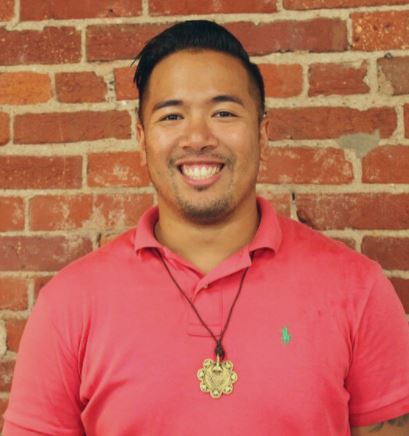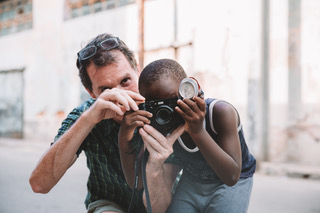Better Together

One’s Fund for Teachers experience does not end with the fellowship, that’s actually the beginning. More than 9,000 public and private school teachers, preK-12, form one of the most powerful cohorts of teachers in the country. Connecting our Fellows for amplified impact is becoming an even larger priority for our organization and one aspect of this effort is our new Circles program. (Learn more about it here.)
Why would teachers want to take on one more thing, especially during a pandemic? We asked members of our Equity & Justice Circle and 2018 FFT Fellow Tim Flanagan responded with the piece below. We’re beginning a new Circle on Thursday, October 1 — this one focused on Virtual Teaching & Learning. To be part of this free Fellow opportunity, register below.
[minti_button link=”https://fundforteachers.chronus.com/p/p2/” size=”small” target=”_self” lightbox=”false” color=”color-1″ icon=””]Register Here[/minti_button]
[minti_divider style=”1″ icon=”” margin=”20px 0px 20px 0px”]
Why are US schools, including my middle school in Connecticut, still largely segregated more than sixty years after Brown v. Board of Education? What are the real causes of the “achievement gap” between BIPOC students and white students? How is the system rigged to favor white students? What are the historical roots of racist policies today? These are just a few of the questions I had when I applied to participate in the Equity and Justice Circle, a new program administered by Fund for Teachers in conjunction with Facing History and Ourselves. As a member of this cohort of ten Fund for Teachers Fellows from across the country, I attended a three-day Teaching for Equity and Justice webinar presented by Facing History and Ourselves, an organization dedicated to fighting bigotry and hate with lessons from history.
The lessons from the summer webinar provided many answers to my questions and the presenters inspired me to do more. I was also left with many new questions. Among them: How have I played a role in promoting racist policies and practices in my classroom? What can I do to be a better antiracist educator?
The Equity and Justice Circle has helped me to process the information I learned and take the next step. Since the summer, the cohort has met monthly with our facilitators who have guided us through a well thought-out process of reflection, discussion, and planning. We have begun to take big ideas from our learning to create a concrete plan embedded in research. During each meeting, we also have time to work with partners in breakout sessions to workshop our ideas and support each other.
[minti_blockquote] “It’s energizing to work with teachers from all around the country, all dedicated to leading equity based change for their school. I decided to co-lead this space because I am passionate about anti-racist practice and teacher led spaces. Although it requires time on my end, knowing that I’m contributing, even in the slightest bit, towards collective change, it makes it worth it.” – Marco Cenabre, 2019 FFT Fellow and teacher in New Haven, CT. Learn about his work with the Anti-Racist Teaching & Learning Collective here.[/minti_blockquote]
“It’s energizing to work with teachers from all around the country, all dedicated to leading equity based change for their school. I decided to co-lead this space because I am passionate about anti-racist practice and teacher led spaces. Although it requires time on my end, knowing that I’m contributing, even in the slightest bit, towards collective change, it makes it worth it.” – Marco Cenabre, 2019 FFT Fellow and teacher in New Haven, CT. Learn about his work with the Anti-Racist Teaching & Learning Collective here.[/minti_blockquote]
I look forward to our meetings every month and the chance to interact with educators who are also struggling to find ways to address the problems of systemic racism in education. We come from different backgrounds and levels of experience in doing this work, yet we all share a passion for creating more equitable and just schools. In just a short time, I’ve become familiar with ideas such as the myth of meritocracy and the achievement gap, the impact of a deficit mindset, white-centered SEL programs, unconscious bias, how the eugenics movement has impacted standardized testing, and critical consciousness as a way to involve students in creating positive change.
I’ve attended several Fund for Teachers events since my fellowship in 2018, and one of the first questions asked during these meetings is, “Where did you travel on your fellowship?” It occurred to me that no one has asked that question in the Equity and Justice Circle. It’s not that we’re not interested, it’s just that our work has a sense of urgency and every minute of our sessions is so purposefully planned so that we leave one step closer to accomplishing our goals. Thank you to Fund for Teachers and Facing History and Ourselves for connecting me with this professional learning community and empowering me to create a more equitable and just classroom and school.
[minti_divider style=”3″ icon=”” margin=”20px 0px 20px 0px”]
 Tim Flanagan in a 2018 FFT Fellow who used his grant to join a photography tour in Cuba with professional artist and documentarian Louis Alarcon to create learning that combines insights about the island nation with photography and digital literacy skills (pictured on his fellowship). Tim has taught middle school students for more than 30 years in Connecticut, Bolivia, and Brazil and was recognized as the 2008 Stonington Public Schools Teacher of the Year. He traveled on a fellowship to Kyrgyzstan through Teachers for Global Classrooms, and spent four months working with schools in Vietnam as a Fulbright Distinguished Teacher. You can follow Tim on Facebook, Instagram, Twitter and his blog The Alternate Route.
Tim Flanagan in a 2018 FFT Fellow who used his grant to join a photography tour in Cuba with professional artist and documentarian Louis Alarcon to create learning that combines insights about the island nation with photography and digital literacy skills (pictured on his fellowship). Tim has taught middle school students for more than 30 years in Connecticut, Bolivia, and Brazil and was recognized as the 2008 Stonington Public Schools Teacher of the Year. He traveled on a fellowship to Kyrgyzstan through Teachers for Global Classrooms, and spent four months working with schools in Vietnam as a Fulbright Distinguished Teacher. You can follow Tim on Facebook, Instagram, Twitter and his blog The Alternate Route.
 Back to Blogs
Back to Blogs